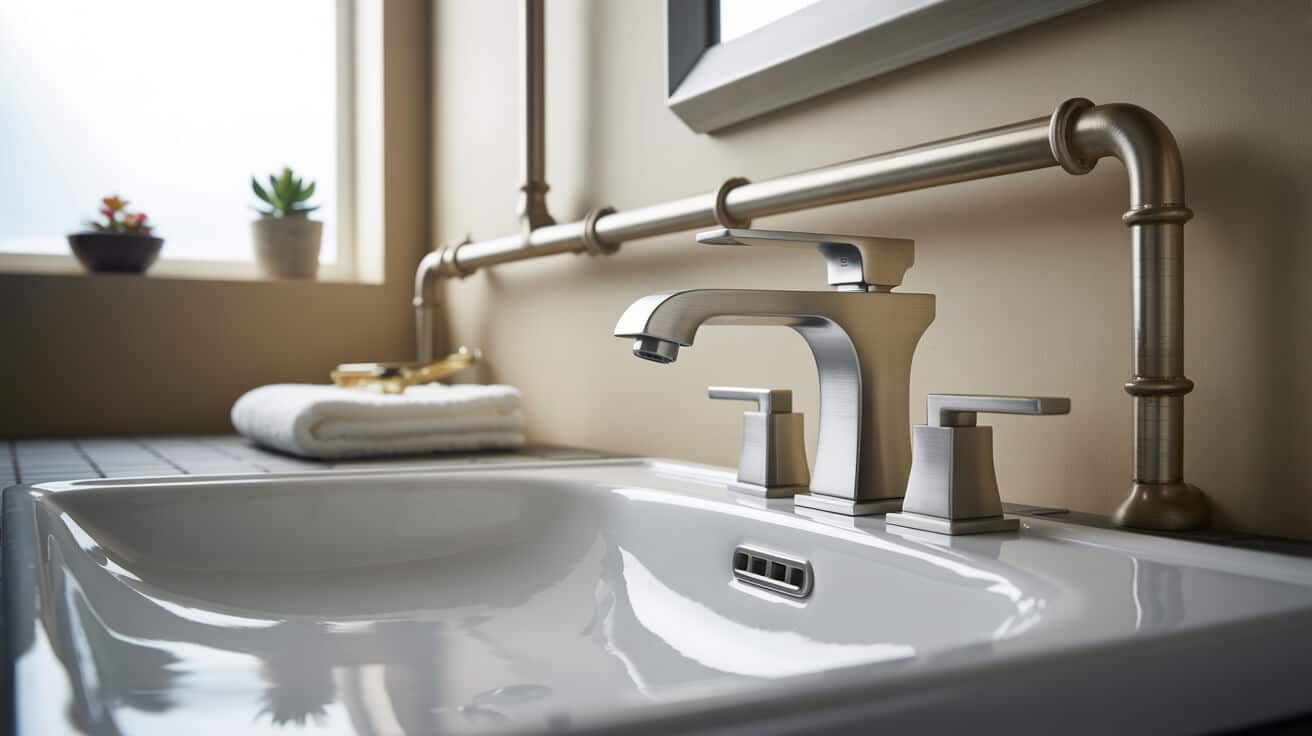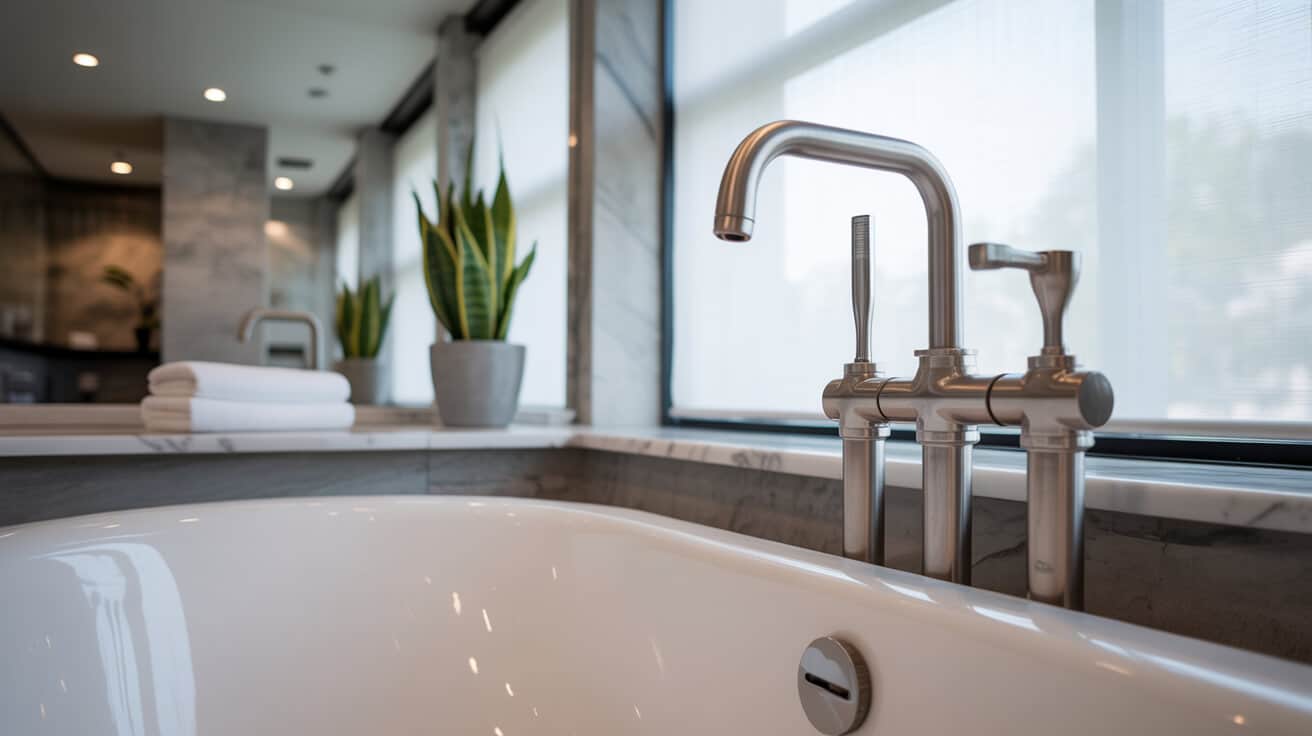WRAS plumbing compliance has become a defining element for property professionals, regulatory inspectors, and your company’s operational leaders, linking water safety with insurance, value, and long-term asset performance. The framework demands verifiable product selection, skilled installation by competent personnel, scrupulous notification, and the preservation of evidence for regulatory or insurance inspection. By aligning to WRAS and leveraging best practices—such as those integrated by Plumbers 4U—your property or organisation establishes a defensible foundation for legal compliance, brand trust, and future adaptability.
Etymology or Name Origin
The Water Regulations Advisory Scheme, abbreviated “WRAS,” was established in the wake of increased regulatory cohesion following the Water Supply (Water Fittings) Regulations 1999. Its title reflects both the advisory capacity—guiding installers, water companies, and the public—and its function as an authoritative body for certifying materials and procedures. The linguistic architecture of “advisory scheme” underscores a cooperative industry model, where guidance, certification, and knowledge dissemination shape the compliance landscape, rather than relying solely on statutory enforcement.
Overview / Context
Potable water integrity is a constant national priority, with historical episodes of contamination underscoring both social and economic consequences. Poorly executed plumbing—whether through use of forbidden materials, incorrect installation, or inadequate documentation—can introduce risk factors whose effects are felt by both individuals and communities. WRAS compliance, as enforced by the scheme and embedded in the practices of leading Plumbing & Heating Companies, serves as an evidence-driven buffer against these risks, transforming compliance from a perfunctory afterthought into a measurable competitive advantage.
Key features of the contemporary compliance environment include the integration of WRAS with other UK and regional frameworks such as Building Regulations (Parts G, H, G3, P), schemes like WaterSafe, and the protocols adopted by water undertakers and local authorities. The interconnectedness of these standards supports your facility, home, or organisation in navigating overlapping legal, technical, and operational requirements without ambiguity.
History
Origins
Early British water systems were governed by local council and borough ordinances, with frequent inconsistencies across the UK. Ad hoc product standards and localised approaches to system maintenance led to repeated failures—most famously, cross-connection events that resulted in public health crises.
Industrial Emergence
By the mid-20th century, urban expansion, emerging sanitation science, and more complex building forms forced a shift towards testable, national-level product and process standards. The rise of professional bodies brought codes of conduct and best practice documentation, but sector fragmentation persisted.
WRAS Formation
The enactment of the Water Supply (Water Fittings) Regulations 1999 marked a turning point, introducing a unified legal framework for technical and procedural oversight. The WRAS scheme emerged as a response to the need for independent testing of pipes, valves, fittings, and appliances—with success measured by demonstrable reductions in public health hazards and infrastructure failures.
Contemporary Evolution
Recent decades have seen WRAS adapt to digitalization, sustainability imperatives, and shifting enforcement strategies. Approved product databases, QR-coded documentation, and online notification protocols have enabled Plumbing & Heating Companies to maintain more robust compliance across asset-rich portfolios and high-value projects. WRAS has also engaged with sectoral initiatives in water conservation, climate adaptation, and consumer transparency, consolidating its role as a policy touchpoint for homeowners, compliance officers, and FMs.

Concept / Description
At its core, WRAS plumbing compliance is built upon three intersecting pillars: approved materials, trained people, and rigorous documentation. These combine to create a methodological system which ensures risk mitigation, legal defensibility, and stakeholder reassurance.
Approved Materials and Products
Only components tested for compatibility, durability, and non-toxicity may carry the WRAS mark. The certification covers:
- Rigid and flexible pipes (copper, PEX, PB, MDPE)
- Fittings and connectors (compression, soldered, push-fit, manifold joints)
- Valves (non-return, RPZ, TMV, DCV)
- Water heaters, softeners, sanitaryware, and cross-connection devices
Products bearing a WRAS Approval Number are recognised as fit for deployment in potable water supply systems, delivering confidence for your company’s operations, whether you handle small residential units or complex multi-site infrastructure.
Installers and Supervisors
WRAS places responsibility for correct installation on plumbers, heating engineers, and contractors, with further oversight by team leaders or FMs. Your selection of competent, WaterSafe-accredited individuals minimises regulatory risk. Plumbers 4U prioritises verified competency, integrating field training, compliance refreshers, and documented skills pathways into workforce management.
Documentation, Notification, and Audit Trail
Proper notification (especially for “notifiable work”) and evidence generation is the linchpin of enforceable compliance. Documentation requirements typically include:
- Product approval certificates and as-fitted drawings
- Regulation 5 notification letters or digital submissions
- commissioning and maintenance logs
- Audit trails comprising status updates, contractor signatures, and inspection checklists
Your records serve as both legal defence and operational memory, ensuring traceability even as assets change hands or are further developed.
Functionality / Purpose / Applications
WRAS compliance processes are engineered to ensure the security and performance of building systems, protecting value and reputation for property managers, landlords, and asset owners.
System Design
Engineers and project leads identify WRAS-approved products before project start. Digital directories and approval lookups guarantee specification precision, while risk assessments of fluid categories pre-empt contamination or cross-connection challenges.
Installation and Testing
Installers adhere to product manufacturer instructions, code-aligned spacing and protection requirements, and location-dependent risk measures such as backflow prevention via NRVs, RPZ valves, or air gaps.
Testing—pressure, leak, or device-specific—follows set protocols using calibrated equipment, with findings logged and independently reviewed when sites require multi-party sign-off.
Notification and Documentation
For works covered by Regulation 5 (e.g., fitting of water heaters, underground supplies, or systems with backflow risk), you are required to notify your local water undertaker in advance, using prescribed forms or web portals. This proactive engagement demonstrates intent to comply and can be vital during subsequent inspection, handover, or property transaction.
Handover and Ongoing Maintenance
Upon system sign-off, complete as-fitted drawings and certifications pass to your facility manager or property owner. Scheduled reviews—especially for buildings with high user turnover or public access—reinforce ongoing compliance and extend the functional lifespan of your installed assets.
Table: Core WRAS Compliance Workflow
| Phase | Key Actions | Output/Documentation |
|---|---|---|
| Design | Selection of WRAS-approved materials; risk assessment | Product list; approval refs |
| Installation | Pipe, fitting, and device implementation; device testing | Onsite logbook; test certs |
| Notification | Advance Regulation 5 notification to authority | Submission confirmation |
| Commissioning | Pressure/leak testing, disinfection, inspection | Commissioning certificate |
| Handover | Documentation transfer to client/operator | O&M manual, logs |
| Maintenance | Scheduled check-ups, device tests, record update | Maintenance log |
Classifications / Types / Variants
Multiple product and document classes underpin the compliance discipline. Granularity in this system reflects both the breadth of installation environments and asset types across the UK built environment.
Product Approvals
- Domestic vs. commercial grade: Differentiated by flow, pressure, and resilience requirements.
- Application specificity: E.g., potable supply vs. irrigation, internal vs. external deployment.
- Legacy vs. modern products: Historic installations may retain discontinued components; retrofitting demands careful documentation.
Document Types
- Pre-work notifications: Regulation 5 forms, drawings, and risk assessments
- Certificates: Product approval, commissioning, self-certification (for WaterSafe or equivalent)
- Audit and maintenance logs: Used for periodic review, enforcement defence, and resale audits
Installation Settings
- New builds: Full design lifecycle, tied to planning and building control approval
- Retrofits and repairs: Focused interventions, often under accelerated timelines or records deficiency
Systems / Tools / Methodologies
Product Directories and Digital Tools
The WRAS Product Directory lists all currently certified products, searchable by code or trade name. Use of QR-linked approval records is spreading amongst leading installers such as Plumbers 4U, enhancing point-of-use verification.
Testing and Inspection Protocols
- Pressure/leak detection: Gauge and sensor systems for pipework and device integration
- Device-specific: Backflow valve testers, water quality metres
Documentation and Notification Solutions
Standard and digital forms, project management tools, and client handover templates help maintain compliance and transfer evidence between installer, client, and regulators.
Methodological Frameworks
- Risk mapping: Fluid category scoring to identify high-risk assets
- Certification chains: Ensuring all products/components trace back to official approval
- Process mapping: Flowcharts guide personnel on stepwise actions, reducing error incidence

Stakeholders / Entities Involved
Contractors and Companies
Plumbing & Heating Companies—whether large multi-site providers or regional specialists—bear ultimate responsibility for on-the-ground compliance, asset management, and client handover accuracy.
Installers, Engineers, and Technicians
These practitioners must remain fluent in product and protocol changes. WaterSafe certification is increasingly seen as a baseline requirement among high-trust clients.
Water Undertakers (Local Water Companies)
Empowered to inspect, approve or reject works, and enforce remediation or disconnection where non-compliance persists. Your company’s documented record simplifies their oversight.
Regulatory and Oversight Bodies
Bodies such as WRAS, WaterSafe, CIPHE, and sector lobbyists play roles in standard updates, guidance dissemination, grievance arbitration, and policy feedback to legislators.
Property Managers, Clients, and Owners
Landlords, facilities managers, and asset owners carry legal obligations for compliance and maintenance. Plumbers 4U’s processes align with common audit and handover protocols, supporting ongoing dutyholder needs.
Additional Professionals
Surveyors, insurance adjusters, architects, and health and safety officers intersect with compliance at key moments in the property and asset life cycle.
Legal / Regulatory / Ethical Considerations
Water Supply (Water Fittings) Regulations 1999
Principal regulation for all new and materially altered plumbing systems; defines scope, requirements, and penalty frameworks for deviance.
Building Regulations (Parts G & H), G3, and Part P
Mandate standards for hot water safety, drainage, water conservation, unvented cylinder installation, and electrical integration.
Notification, Evidence, and Enforcement
Advance notification is mandatory for notifiable work; failure risks legal notice, enforced rework, financial restitution, and possible asset disconnection. Compliance is documented through traceable paperwork, typically retained for the building’s operational lifetime.
Approved Contractor Schemes
WaterSafe and affiliated bodies define further minimum standards for skill, conduct, and complaint remediation. Plumbers 4U and comparable companies leverage this institutional credibility, offering your property greater protection during disputes.
Data Protection
Compliance data is subject to modern information privacy regulations. Your organisation’s internal policies for secure storage and transfer are an additional compliance axis.
Performance Metrics / Data / Measurements
Compliance Performance
Industry-wide audits report variable rates of compliance, with highest rates observed when:
- Products are sourced from WRAS directory
- Installers maintain current WaterSafe or equivalent certification
- Documentation is digitised for ease of audit and reporting
Table: Key Performance Indicators
| Metric | Typical Range | Influence Factors |
|---|---|---|
| Product approval compliance | 90–98% (audited) | Supply chain, installer skill |
| Notification accuracy | 75–95% | Process, client oversight |
| Incident response time | 1–10 days | Asset complexity, authority |
| Post-installation defects | 1–3% | Quality assurance process |
Notable Trends
- Digitally-supported companies (e.g., Plumbers 4U) report faster regulatory approval cycles.
- High documentation standards correlate with insurance claims approval rates and lowered operational liabilities.
Challenges / Barriers / Limitations
Operational and Technical Barriers
- Supply constraints: for niche or obsolete WRAS-approved parts
- Inconsistent enforcement: by regional water companies
- Project documentation lapses: linked to high installer turnover or rushed works
Social and Economic Factors
- Compliance sometimes deprioritized due to up-front costs or resource constraints.
- Variable awareness among small landlords and builders introduces risk to your property, especially in fast-turnover markets.
Policy and Philosophical Limitations
- Tension between flexibility for innovation and the need for uniform standards.
- Need for continuous training and protocol updating to avoid skill gaps.
- Some critique that WRAS requirements may suppress adoption of alternative eco-materials without clear efficiency gains.
Impact / Influence / Legacy
Public Health and Market Confidence
Systematic WRAS compliance produces statistically significant improvements in water safety and infrastructure longevity, observable in national health metrics and empirical property value trends.
Professionalism and Asset Integrity
The gradual maturation of Plumbing & Heating Companies into compliance-first organisations has increased sector credibility, asset investment security, and the trust of institutional clients. Documented compliance functions as an asset, sometimes increasing sale or lease value in commercial property markets.
Legacy on Regulatory Evolution
The embeddedness of WRAS requirements in all major UK building and asset management codes continues to ripple through legislative updates, procurement strategies, and professional development policies.
Future directions, cultural relevance, and design discourse
Digital Compliance and Automation
Emerging platforms anticipate real-time registry updates, predictive risk scoring, and instant notification exchange between site, company, and authority.
Sustainability and Systemic Change
Trends toward water conservation, circular material usage, and climate-adaptive design drive the evolution of certification methodologies and enforcement focus.
Professional Cultural Impact
Increasing expectation for certified, provable compliance in both developer and consumer markets. Plumbers 4U and industry leaders are championing ongoing learning, transparent reporting, and customer engagement strategies that embed compliance into every project narrative.
Anticipated Regulatory Adaptation
As cities densify and infrastructures age, incremental reforms in both technical requirements and enforcement patterns are expected, fostering a compliance culture that values continual adaptation, proactive education, and aligned customer–contractor partnerships.

